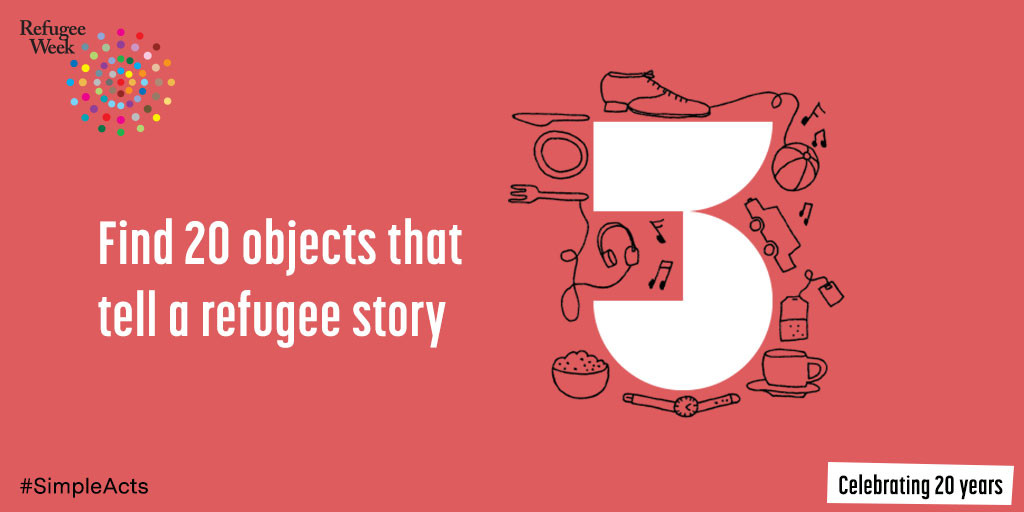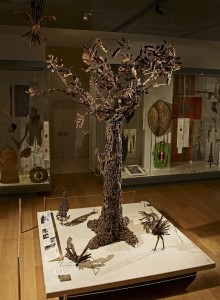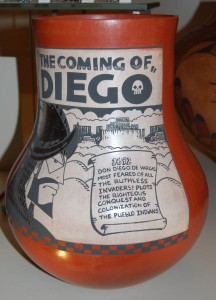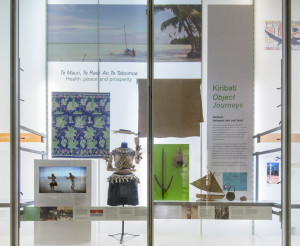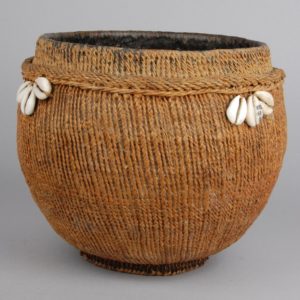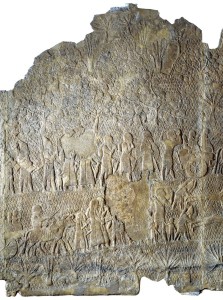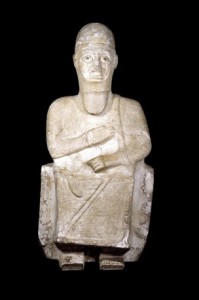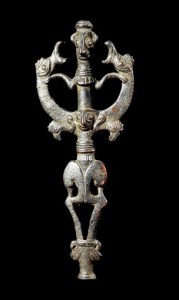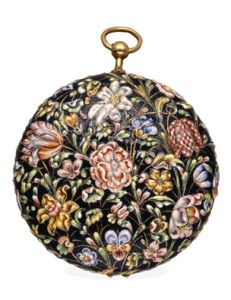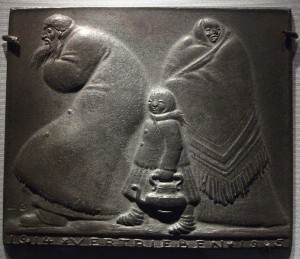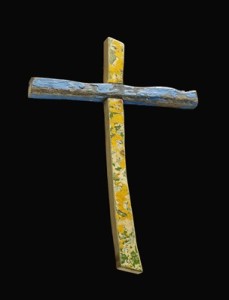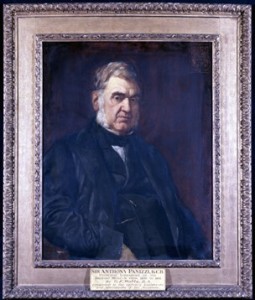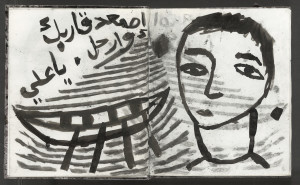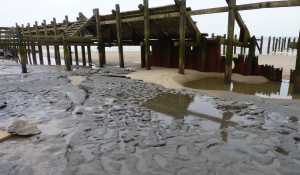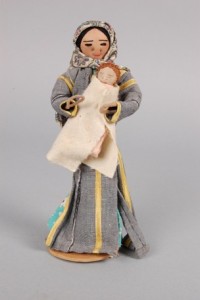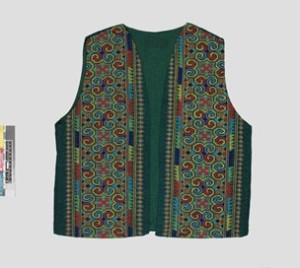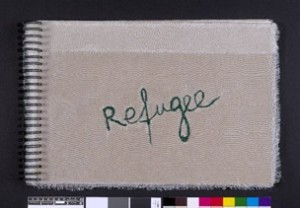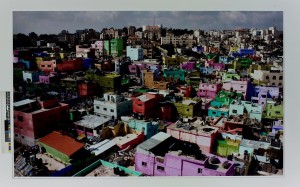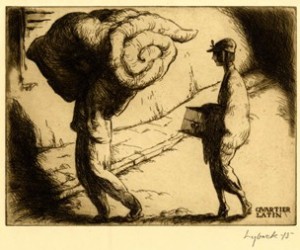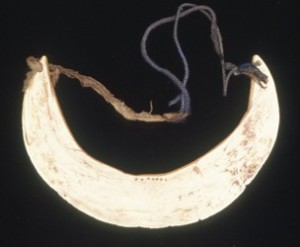To mark 20 years of Refugee Week, in June 2018 the British Museum created a trail of 20 objects from different cultures that tell stories of migration and displacement throughout history.
Visitors to the museum were invited to take the trail as part of the British Museum’s Refugee Week 2018 programme, which also included music, film, dance, installations, a photo exhibition and the opportunity to write a 20 word poem.
‘Find 20 objects that tell a refugee story’ is one of 20 Simple Acts celebrating 20 years of Refugee Week. For more information and the full list, visit the Simple Acts page.
Objects on Display
1. Tree of Life:
After a struggle for independence from colonial rule, Mozambique experienced a civil war from 1976 to 1992 that displaced millions of individuals. This work is comprised of decommissioned firearms that have been cut up and welded together.
2. The Coming of Diego:
This jar by Diego Romero commemorates the 1680 Pueblo Revolt against the Spanish conquistadores. The Pueblo Indians in New Mexico ended Spanish rule after 12 years of enduring persecution, suppression and displacement of their culture.
3. Kiribati Object Journeys:
The identity of the Kiribati people is rooted in their connection to the sea and land. Their resources and homes located across thirty-three islands in the Pacific Ocean are under threat as sea levels continue to rise and land is submerged.
4. Somali Object Journeys:
The Somali people were nomadic herders until the late 1900s. The objects here reflect their nomadic lifestyle.
5. Siege of Lachish Reliefs:
These reliefs depict the siege and conquest of Lachish after people rebelled against the Assyrian king Sennacherib in 701 BC. He forced the inhabitants to move over 1000 miles away from Judea to the Assyrian capital of Nineveh in northern Iraq.
6. Statue of King Idrimi of Alalakh:
The Statue of King Idrimi of Alalakh is inscribed in cuneiform with the exploits of this Syrian refugee turned king and his family.
7. Luristan Bronzes:
From 1450 BC onwards, people from the steppes of central Asia migrated south to Iran. Bronzes like these appeared on the market in the 1920s and were found by local tribes settling on ancient cemeteries after recovering from a 10-year civil war.
8. Silver-gilt ewer and dish:
Made for an aristocratic family in Britain, this work was made by the workshop of Pierre Harache I. He was one of the thousands of French Huguenots of Protestant faith who was forced to flee France in the 1680s due to religious persecution.
9. Gold and enamel-cased watch, 1650s:
This gold and enamel-cased watch was made in the workshop of David Bouquet, a leading Huguenot watchmaker and refugee who came to London after escaping religious persecution in France.
10. Refugees:
Coins were used to tell Germany’s World War I story. In this piece, sculptor Ludwig Gies provides commentary on the Russian invasion of East Prussia, forcing many to flee to Germany. Most would not be able to return due to the destruction.
Objects Not on Display
1. Lampedusa Cross:
For the refugee survivors of a shipwreck off the island of Lampedusa, the island’s carpenter, Mr. Tuccio, fashioned a cross out of pieces of the ship. This signifies their salvation and hope for the future.
2. Portrait of Antonio Panizzi:
Antonio Panizzi was an Italian refugee who came to England in 1823 and was later appointed to the museum in 1831. His dedication as a librarian here improved the museum’s belongings and prompted the building of the Round Reading Room.
3. Ali’s Boat:
When he returned to Baghdad, Sadik Kwaish Alfraji received a letter from his 11-year-old nephew. This object is a response to that letter and tells a personal story emphasizing migration and exile
4. Happisburgh Footprints:
A set of footprints found on the beaches of Norfolk were made by early migrants to Britain one million years ago but were found in 2013 by a team from the British Museum. Two weeks later the footprints were washed away by the tide.
5. Palestinian Dolls:
This handmade doll was made in the YWCA School Aqabat Jabar Refugee Camp in the West Bank. The doll wears traditional Palestinian dress from Nazareth and swaddles a baby.
6. Waistcoat:
This vest was left in Thailand’s Chiang Kham Refugee Camp.
7. Refugee:
An embroidered artist’s book contains images of various refugees from around the world
8. Colour Correction:
Part of “The Camp” series, this photograph portrays the struggle of having to relocate one’s life. It shows how the loss of lifestyle, mobility and choice creates a constant feeling of emergency.
9. Quartier Latin:
This print portrays two refugees as they travel with their possessions, capturing how the lives of refugees and migrants are often completely uprooted. #RefugeeWeek2018 #BritishMuseum
10. Ornament:
In the 1930s, many people from the Komblo tribe of Papua New Guinea were forced from their land as refugees, spending the 1940s and 1950s as migrant labourers. This ornament belonged to Nin, one of the migrant labourers.
